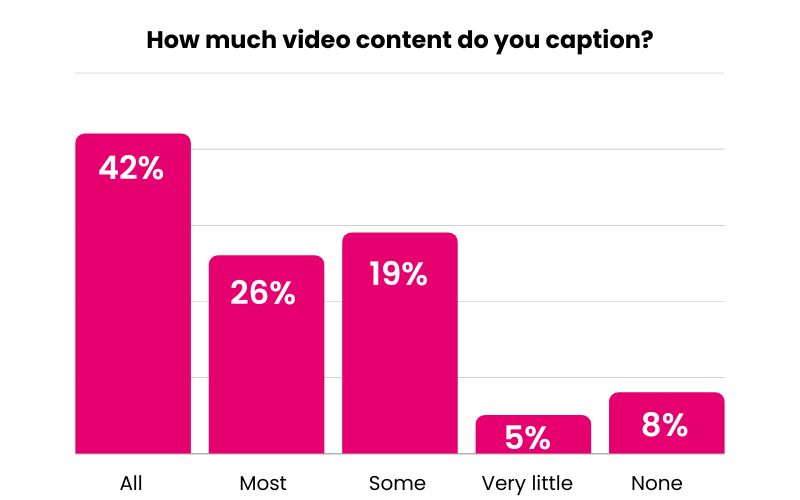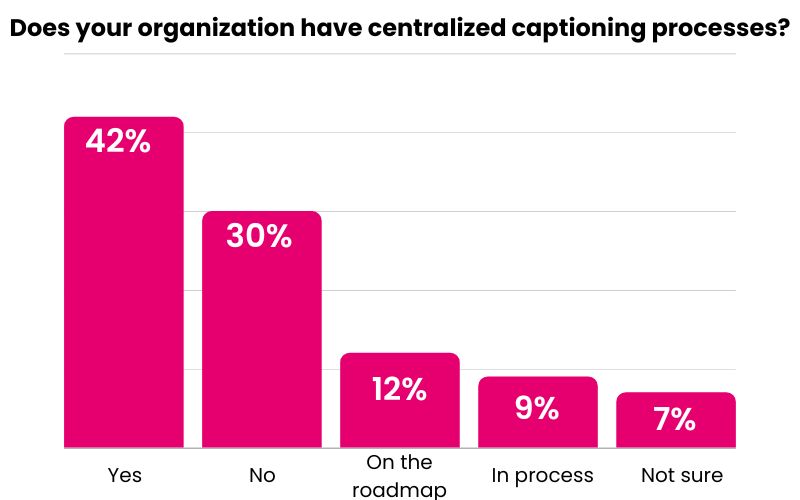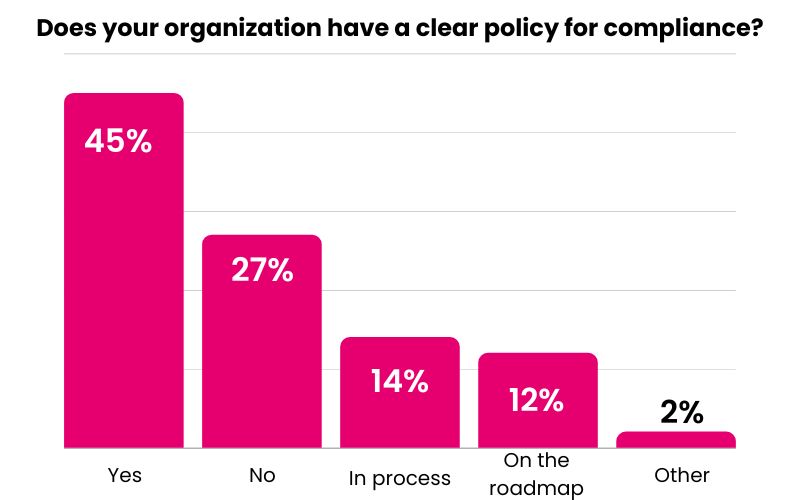Centralized Captioning: What the Data Shows About Procedures, Policies, and Prioritization
Updated: July 5, 2022
Read the 2022 State of Captioning [Free Report]
How video captioning works across organizations is similar to how some families divide grocery duties. Who’s responsible for shopping, unpacking the bags, and cooking? Which items get attention first?
In some organizations, one department handles all captioning responsibilities. In other organizations, multiple departments share captioning duties, similar to how multiple family members might share shopping, unpacking, and cooking responsibilities.
Some organizations strive for a centralized captioning process in which one group is responsible for video accessibility rather than individual business units. When prioritizing videos for captioning, many organizations caption all their content or as much as their budgets allow. Other organizations caption videos by request because they deserve urgent attention, similar to how you would put the cold food in the fridge before unpacking shelf-stable foods.
To learn how organizations across industries organize their captioning processes, we pulled survey data from our 2022 State of Captioning report. Read on to learn what we found.
Get Access to the 2022 State of Captioning Report
How many organizations caption all their video content?
In our 2022 State of Captioning, we surveyed 405 respondents from multiple industries, including education, corporate, media and entertainment, and government.
The above graph represents how many organizations caption all, most, some, very little, or none of their content.
The overwhelming majority of organizations (68%) caption all or most of their video content, while only 19% caption some of their content and 13% caption very little or none.
When we asked organizations how they prioritized video for captioning, responses varied. Prioritization is an important part of any accessibility initiative, whether an organization uses a centralized or decentralized approach. Some organizations (14%) caption by request only, 10% caption only the most popular content, and 8% caption what they can afford in their budget.
How many organizations have centralized procedures or processes for captioning?
Over 50% of organizations have a centralized process for captioning or are in the process of developing one now.
Centralized captioning means all content goes through the same procedure when getting captioned. Centralization can be a very efficient, cost-effective, and thorough solution to complying with video accessibility requirements. Depending on an organization’s size and needs, centralization can be enormously helpful in making accessibility testing and measurement more manageable and sustainable, which can save organizations time and resources and increase buy-in and budgets from executive teams.
Centralized captioning and accessibility is a prevalent topic in the higher education space. Schools are under immense pressure to caption their video content because of legal action, student accommodation requests, and the increasing role of video in higher education.
Read the 2022 State of Captioning
How many organizations have a clear policy for captioning compliance?
In our 2022 State of Captioning survey, almost 60% of respondents had a clear policy for captioning compliance or were in the process of creating one. However, 27% did not have one now or on the roadmap for the future.
A key aspect of centralization is having a clear policy for captioning compliance. To centralize video accessibility efforts, organizations need to implement a video accessibility policy. This policy should include a mission statement explaining why video accessibility matters in your organization, who in your organization must adhere to procedures, and the target – or level of compliance – video creators must meet.
Learn more about centralized captioning in our 2022 State of Captioning report:

Further Reading

Subscribe to the Blog Digest
Sign up to receive our blog digest and other information on this topic. You can unsubscribe anytime.
By subscribing you agree to our privacy policy.







